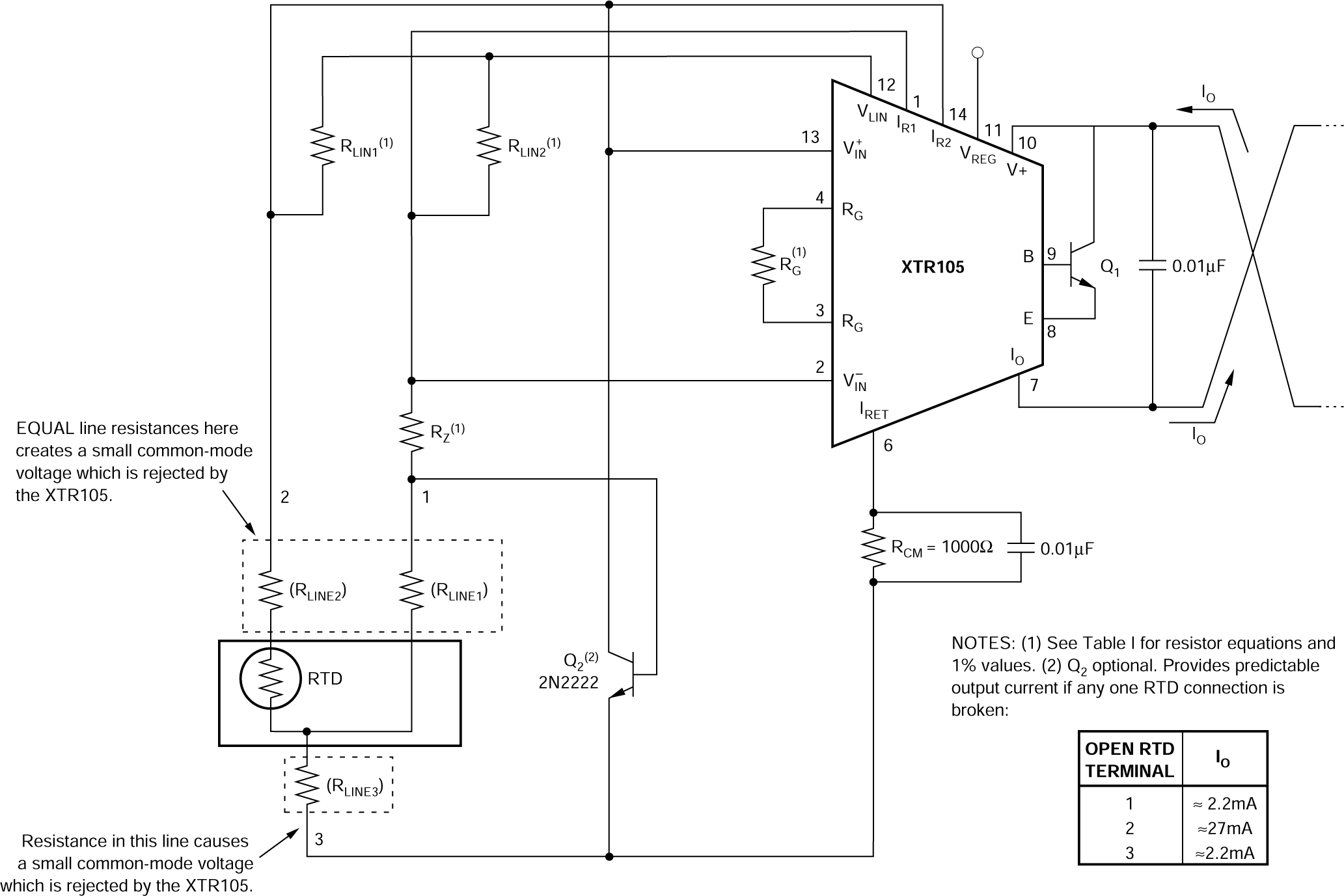SBOS061C February 1997 – October 2024 XTR105
PRODUCTION DATA
- 1
- 1 Features
- 2 Applications
- 3 Description
- 4 Pin Configuration and Functions
- 5 Specifications
- 6 Detailed Description
- 7 Application and Implementation
- 8 Device and Documentation Support
- 9 Revision History
- 10Mechanical, Packaging, and Orderable Information
Package Options
Refer to the PDF data sheet for device specific package drawings
Mechanical Data (Package|Pins)
- D|14
- N|14
Thermal pad, mechanical data (Package|Pins)
Orderable Information
6.3.3 Open-Circuit Protection
Optional transistor Q2 in Figure 6-3 provides predictable behavior with open-circuit RTD connections. If any one of the three RTD connections is broken, the XTR105 output current goes to either the high current limit (≅ 27mA) or low current limit (≅ 2.2mA). This state is easily detected as an out-of-range condition.
 Figure 6-3 Remotely Located RTDs With a 3-Wire
Connection
Figure 6-3 Remotely Located RTDs With a 3-Wire
Connection